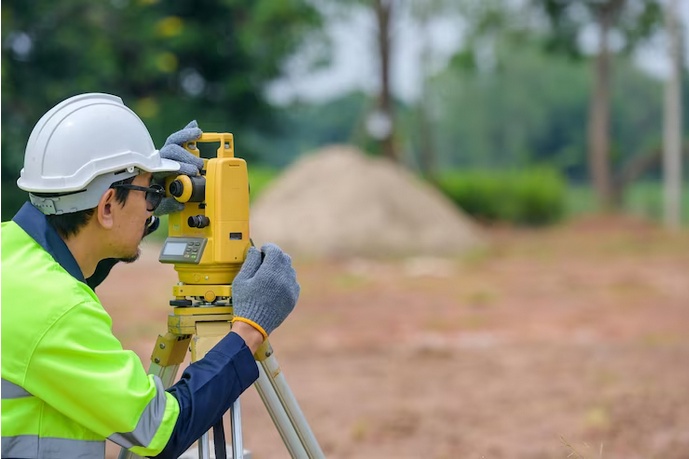In the intricate network of urban infrastructure, drainage systems often operate quietly beneath our awareness, facilitating the smooth flow of wastewater and rainwater. Unseen and underappreciated, these vital conduits play a crucial role in maintaining the health and functionality of our cities. The advent of Closed-Circuit Television (CCTV) surveys has revolutionized the inspection and maintenance of drainage systems, providing invaluable insights into the condition of these underground lifelines.
I. The Unseen World Below Ground
Beneath the bustling streets and neighborhoods lies a hidden world of pipes and conduits—drainage systems that form the unsung backbone of urban life. Responsible for managing the flow of wastewater, these systems safeguard communities from flooding, contamination, and other potential hazards. The challenge lies in the inherent invisibility of these vital infrastructural elements, often leading to a lack of attention until problems arise. To address this, regular inspection and maintenance are essential to ensure the reliability and longevity of drainage systems.
II. Transformative Potential: CCTV Surveys vs. Traditional Inspection Methods
Traditionally, the inspection of drainage systems involved labor-intensive and disruptive methods such as manual examination and excavation. These approaches, while effective, were often time-consuming and financially burdensome. The evolution of technology has ushered in a new era, with CCTV surveys emerging as a transformative tool in the maintenance of drainage systems.
CCTV drain surveys utilize miniature cameras mounted on remotely operated robotic devices. These cameras navigate through the intricate web of pipes, capturing real-time footage of the system's interior. This technological leap allows for a detailed and accurate assessment of the condition of drains, enabling inspectors to identify issues such as blockages, structural damage, and misalignments with precision. In comparison to traditional methods, CCTV surveys offer a non-intrusive, efficient, and cost-effective means of gathering crucial insights into the state of drainage systems.
III. Gaining Access to the Unreachable: Non-Intrusive Advantages of CCTV Surveys
A primary advantage of CCTV drain surveys lies in their non-intrusive nature. Unlike traditional inspection methods that often required extensive excavation, CCTV surveys can be conducted without disrupting the surface above the drainage network. This not only minimizes inconvenience to residents and businesses but also significantly reduces the overall cost of inspection. The flexibility of the cameras to navigate through bends, junctions, and various pipe dimensions ensures a comprehensive examination of the entire system without the need for physical intervention.
Moreover, the non-invasive nature of CCTV surveys contributes to the preservation of urban aesthetics. Cities can maintain their visual appeal without the scars left by frequent excavations. This seamless integration of technology into existing infrastructure represents a harmonious approach to addressing the maintenance needs of drainage systems while minimizing the impact on the urban environment.
IV. Early Detection: A Cornerstone of Efficient Maintenance
CCTV drain surveys excel in early detection, a cornerstone of efficient maintenance. Identifying blockages, leaks, or structural weaknesses at an early stage enables prompt remediation, preventing further damage and mitigating the risk of emergencies. The proactive nature of CCTV surveys provides a significant advantage over reactive approaches, reducing the likelihood of crises and their associated financial and logistical burdens.
V. Environmental Stewardship and Compliance
Beyond its economic advantages, CCTV drain surveys contribute to environmental stewardship. The swift identification and resolution of leaks or contaminations prevent harmful substances from entering water sources, promoting the preservation of ecosystems and public health. In an era where environmental sustainability is a global priority, CCTV surveys align with broader goals of reducing the ecological impact of urban development.
Additionally, regulatory bodies increasingly mandate regular inspection and maintenance of drainage systems to ensure compliance with environmental standards. CCTV surveys offer a documented and comprehensive approach to meeting these regulatory requirements, providing municipalities with a transparent means of fulfilling their obligations and safeguarding the environment.
VI. Conclusion: Illuminating the Depths for Sustainable Urban Living
In conclusion, the adoption CCTV Surveys of Drains illuminates the hidden depths of urban infrastructure, providing crucial insights into the condition of drainage systems. The non-intrusive advantages, coupled with the early detection of issues and contributions to environmental stewardship, position CCTV surveys as a pivotal tool in the pursuit of sustainable and resilient urban living. As cities continue to evolve, embracing innovative technologies like CCTV surveys becomes imperative, ensuring the ongoing health and functionality of the essential underground lifelines that keep our urban centers thriving.


No comments yet